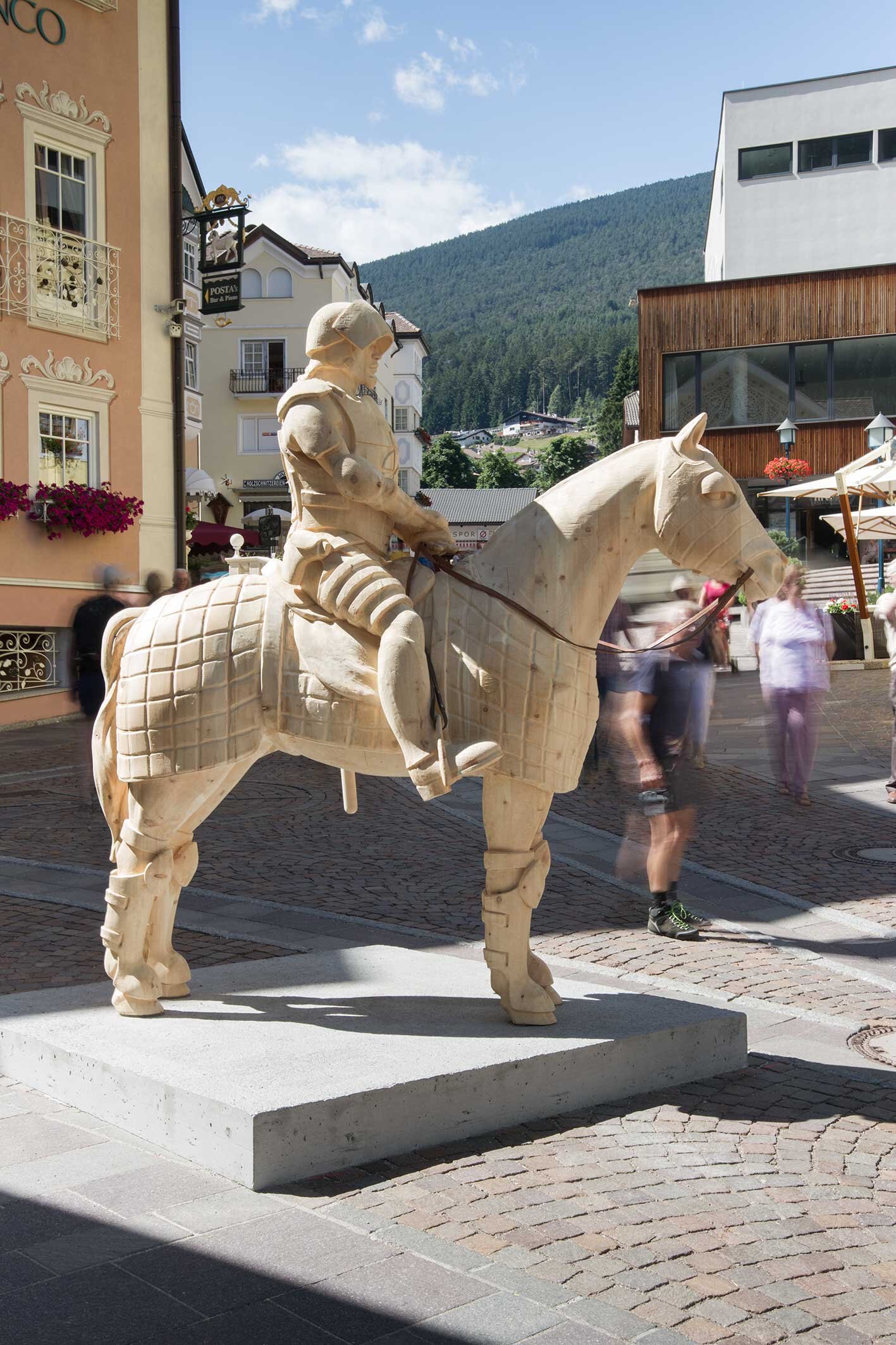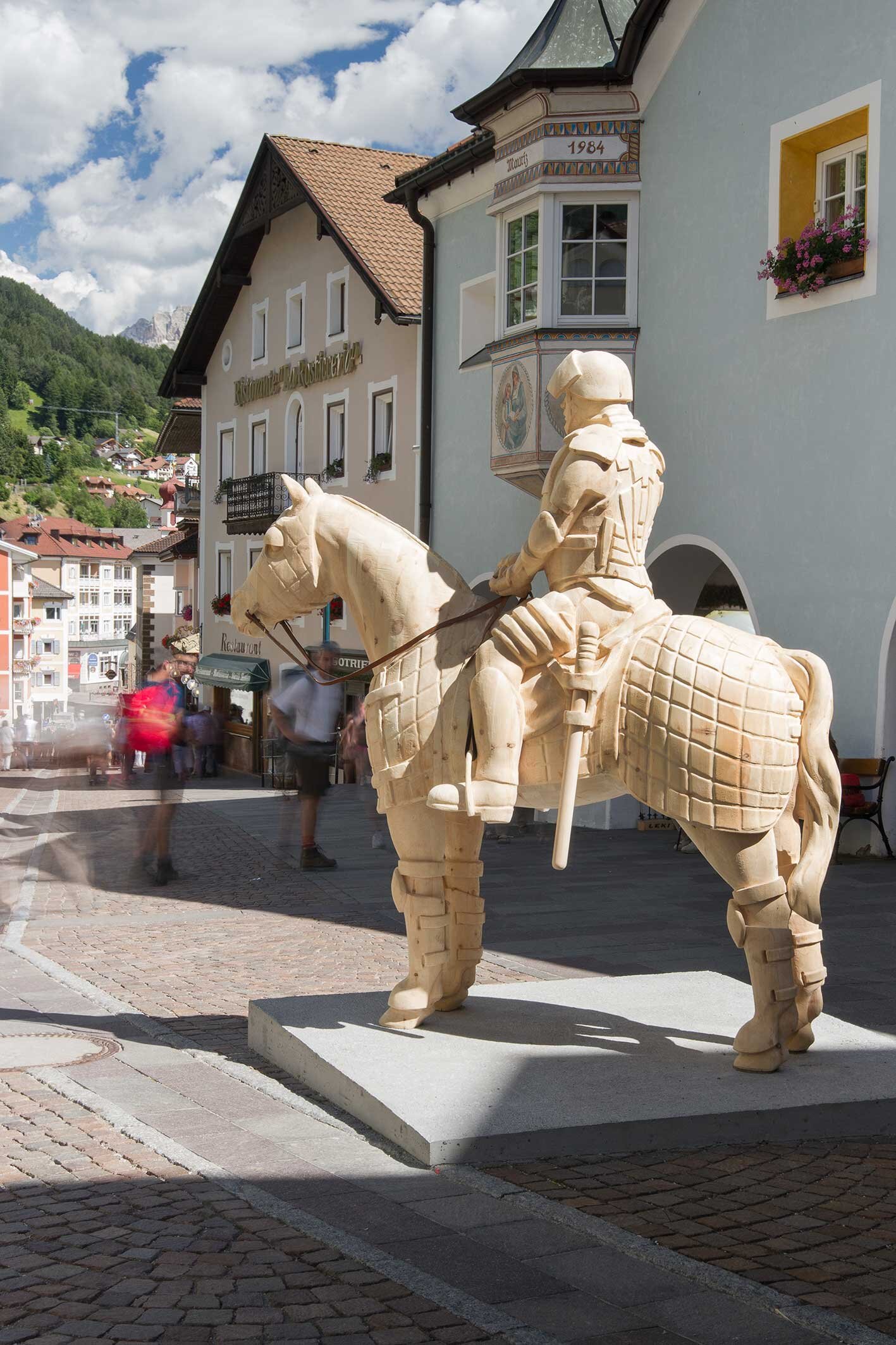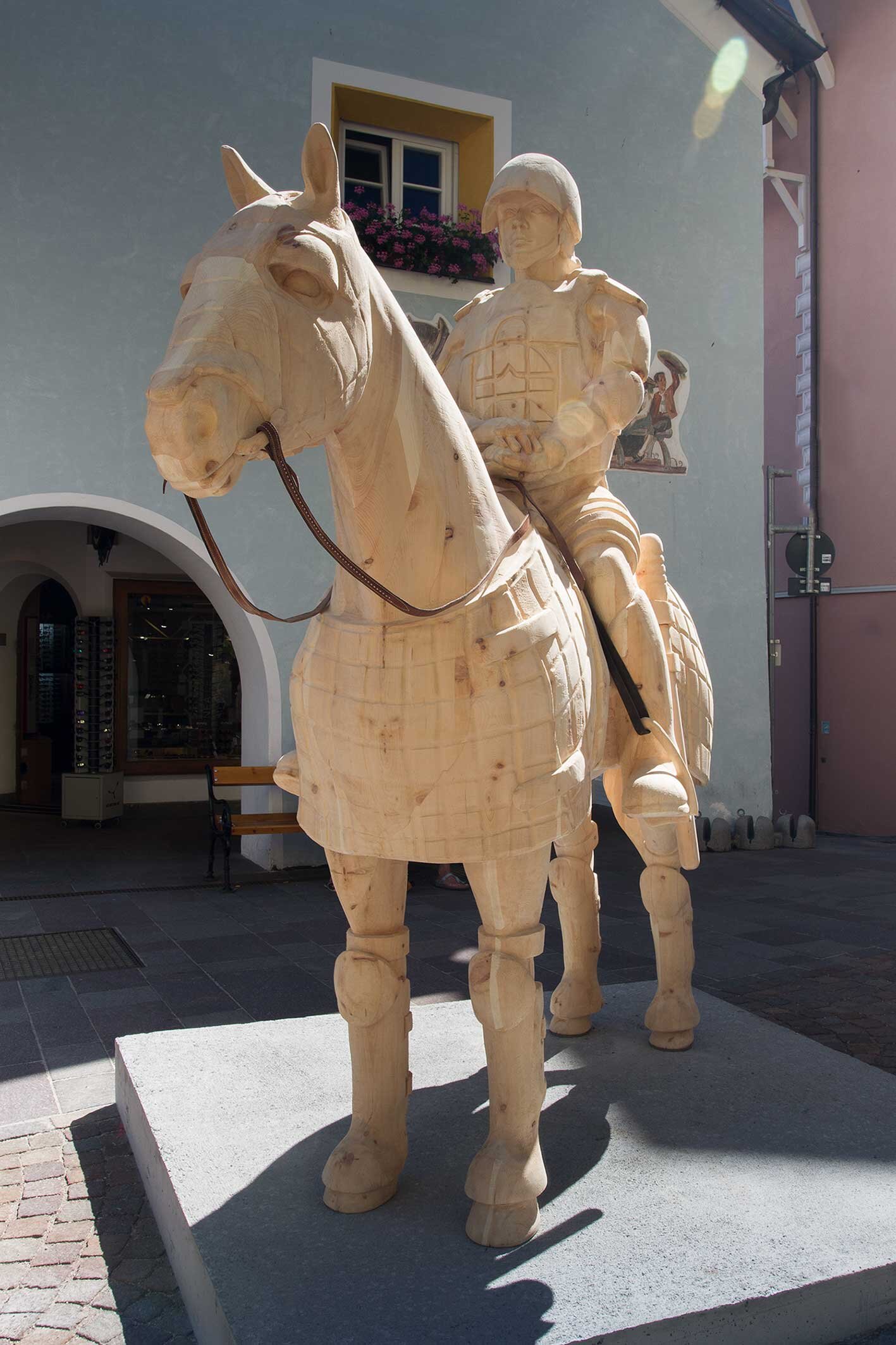
Fernando Sánchez Castillo
*1976, Spain
lives and works in Madrid, Spain
EN
Fernando Sánchez Castillo’s public sculpture, conceived for the Biennale Gherdëina, refers to the tradition of the so called “Nagelmänner" - a form of wartime propaganda and fundraising for members of the armed forces during World War I. “Nagelmänner" consisted of wooden statues into which nails were driven in exchange for donations. Sánchez Castillo reinterprets Val Gardena’s mounted crusader of St. Ulrich by updating the monument’s symbolic meaning and fabricating a contemporary anti-hero for post-heroic times of violence and terror. His version of a local “Nagelmann” statue consists of a life-size wooden figure of an armed and uniformed policeman on a horse, like those often seen in action to control civic riots or mass manifestations. In Sánchez Castillo’s art of masquerade and ironic twists, an infamous symbol of state power and dominance enters a historical narrative of patriotism, collectivity and belonging.
IT
La scultura pubblica di Fernando Sánchez Castillo, concepita per la Biennale Gherdëina, fa riferimento alla tradizione dei cosiddetti "Nagelmänner" - una forma di propaganda bellica e di raccolta di fondi per i membri delle forze armate durante la prima guerra mondiale. I "Nagelmänner" consistevano in statue di legno in cui venivano conficcati chiodi in cambio di donazioni. Sánchez Castillo reinterpreta il crociato a cavallo di Sant'Ulrico della Val Gardena aggiornando il significato simbolico del monumento e costruendo un antieroe contemporaneo per tempi post-eroici di violenza e terrore. La sua versione di una statua locale "Nagelmann" consiste in una figura di legno a grandezza naturale di un poliziotto armato e in uniforme su un cavallo, come quelli spesso visti in azione per controllare le rivolte civili o le manifestazioni di massa. Nell'arte mascherata e ironica di Sánchez Castillo, un simbolo infame del potere e del dominio statale entra in una narrazione storica di patriottismo, collettività e appartenenza.
DE
Fernando Sánchez Castillos öffentliche Skulptur, die für die Biennale Gherdëina konzipiert wurde, bezieht sich auf die Tradition der so genannten "Nagelmänner" - eine Form der Kriegspropaganda und des Spendensammelns für Angehörige der Streitkräfte während des Ersten Weltkriegs. "Nagelmänner" bestanden aus hölzernen Statuen, in die im Austausch gegen Spenden Nägel geschlagen wurden. Sánchez Castillo interpretiert Grödens berittenen Kreuzritter des heiligen Ulrich neu, indem er die symbolische Bedeutung des Denkmals aktualisiert und einen zeitgenössischen Anti-Helden für post-heroische Zeiten der Gewalt und des Terrors erschafft. Seine Version einer lokalen "Nagelmann"-Statue besteht aus einer lebensgroßen Holzfigur eines bewaffneten und uniformierten Polizisten auf einem Pferd, wie man sie oft bei der Kontrolle von Bürgerunruhen oder Massenkundgebungen sieht. In Sánchez Castillos Kunst der Maskerade und ironischen Verdrehung wird ein berüchtigtes Symbol staatlicher Macht und Herrschaft zu einer historischen Erzählung über Patriotismus, Kollektivität und Zugehörigkeit.



